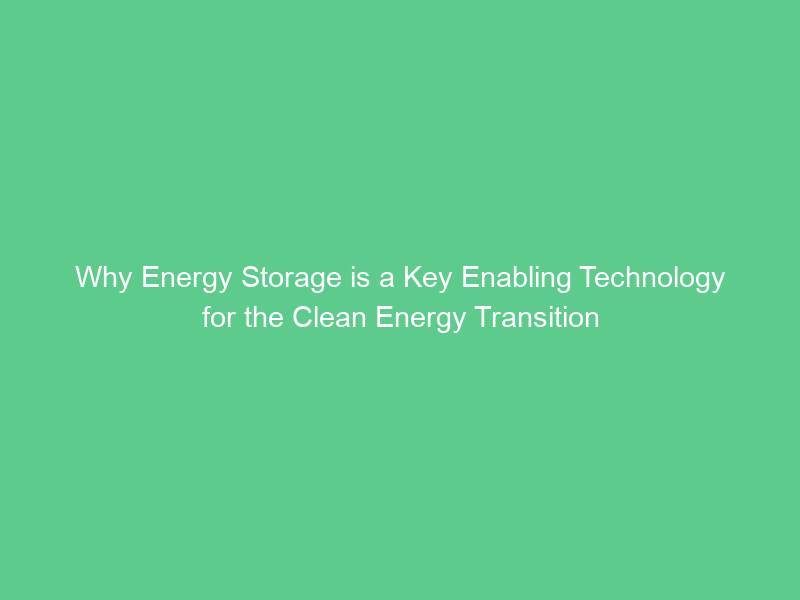
Energy storage is an indispensable technology in our clean energy transition. It can “firm up” renewable resources by storing their power when the sun or wind are shining or blowing, reduce electricity costs by storing and dispatching at cost-efficient times, and improve grid reliability.
Renewable Energy
Energy storage devices can help the grid operate more efficiently and reduce power outages during peak periods, helping maintain an ideal equilibrium between production and consumer demand for electricity.
Renewable sources like solar and wind power rely on nature for their electricity production, so their output cannot always occur at a constant pace. To make renewables a reliable part of the power system, energy storage becomes essential.
Batteries remain one of the primary forms of energy storage, but other technologies are becoming more cost-competitive as well. Hydrogen can store electricity for longer durations and is another promising technology; yet batteries and long-duration storage solutions still require considerable investments to become commercially viable – this challenge ESMAP seeks to overcome through partnerships with key stakeholders and providing funding opportunities.
Community Resilience
As climate change, urbanization, and population migration increase threats faced by communities, it becomes more essential that they exhibit resilience. Community resilience can be defined as “the sustained ability of a community to utilize available resources in response to, endure and recover from adverse situations”.
According to RAND research, key features of a resilient community include social connectedness, the capacity for self-reliance, hopefulness and an ability to make good decisions. These qualities can be fostered through community preparedness planning, disaster response training and other strategies.
Energy storage projects can enhance community resilience by decreasing dependence on the grid and enabling essential facilities to remain functional during outages. When combined with renewable energy sources such as solar PV or wind power, storage projects offer additional advantages. Tax equity investments, philanthropic contributions and innovative sources of financing designed specifically for clean energy projects provide mission-align funding streams suited for clean energy initiatives like Breaking Barriers. Breaking Barriers is one such community initiative using solar+storage powering a community center as well as three nearby critical facilities.
Energy Efficiency
Energy efficiency is one of the best ways to minimize environmental impact. By using less energy for performing similar tasks, demand drops significantly and pressure on energy resources and ecosystems is reduced significantly.
Energy-efficient technologies reduce fossil fuel consumption and emissions across all economic sectors. More efficient appliances and buildings consume less electricity; more efficient motors in factories reduce oil usage; increasing efficiency in steel, cement, and chemical manufacturing reduces direct fossil fuel usage; while effective refrigeration technology and electric vehicles lower transport fuel demands.
Energy efficiency can also be used to store energy. For example, using more energy-efficient lighting and appliances during off-peak hours (known as “peak shifting”) can help utilities lower power generation costs during peak load periods; this helps address reliability concerns while simultaneously bringing down electricity prices.
Electricity Pricing
Just like your cell phone’s battery, commercial- and industrial-scale energy storage systems can be charged with power from the grid and then discharged when there is an energy shortage or when prices increase significantly. Solar PV panels are being increasingly combined with these storage solutions in order to maximize their value to the grid.
Energy storage helps utilities reduce costs by helping manage peak demand and avoiding price spikes on energy markets. Hedging can protect them from this volatility; but storage also provides capacity and resilience on demand when needed to mitigate its effect.
As utility customers pay different volumetric charges depending on when they use power, known as Time of Use (TOU) rates, storage can help lower these volumestric charges by shaving peak demand and taking advantage of cheaper TOU rates to charge or discharge back up again at cheaper TOU rates – known as peak shaving. According to an analysis published in Joule, storage would need to cost roughly $20 per kilowatt-hour to integrate wind and solar into the grid successfully; however, researchers suggest this target may be too stringent and should be relaxed to something more practical for existing technologies.

